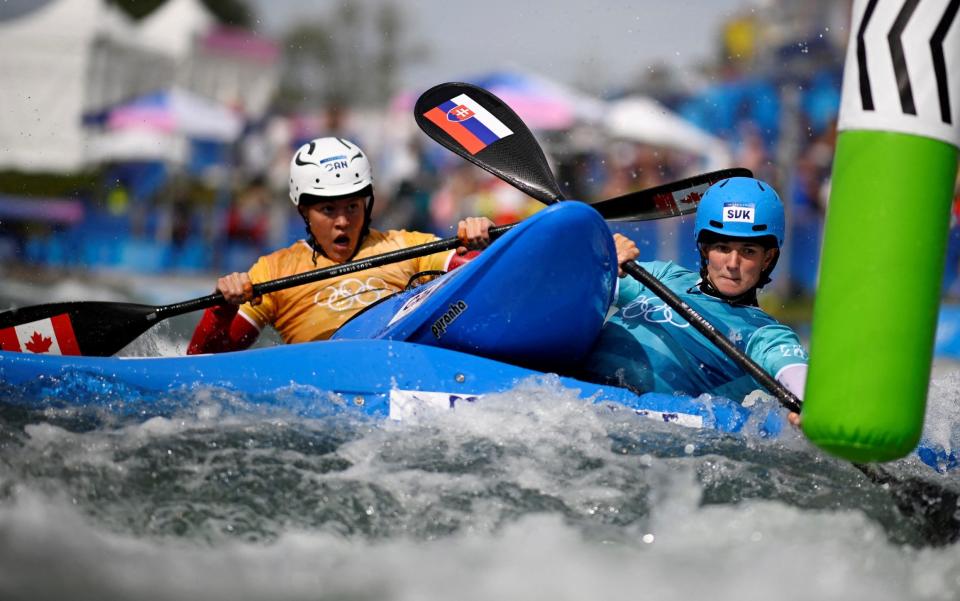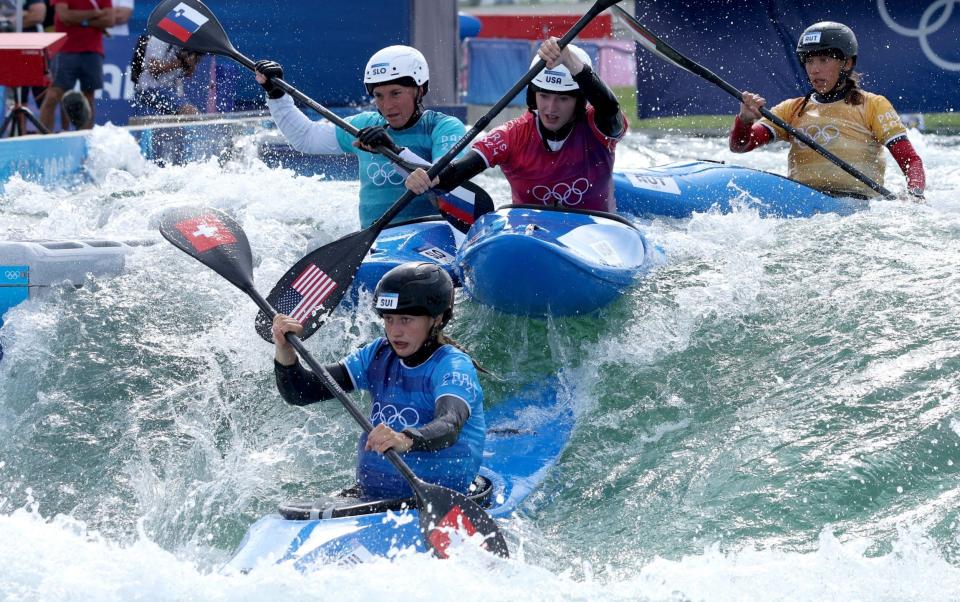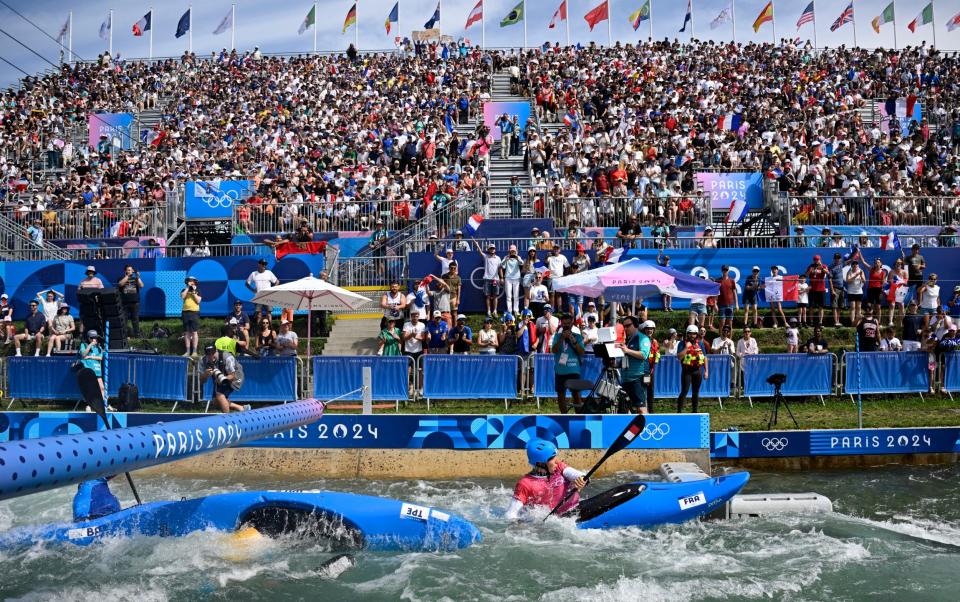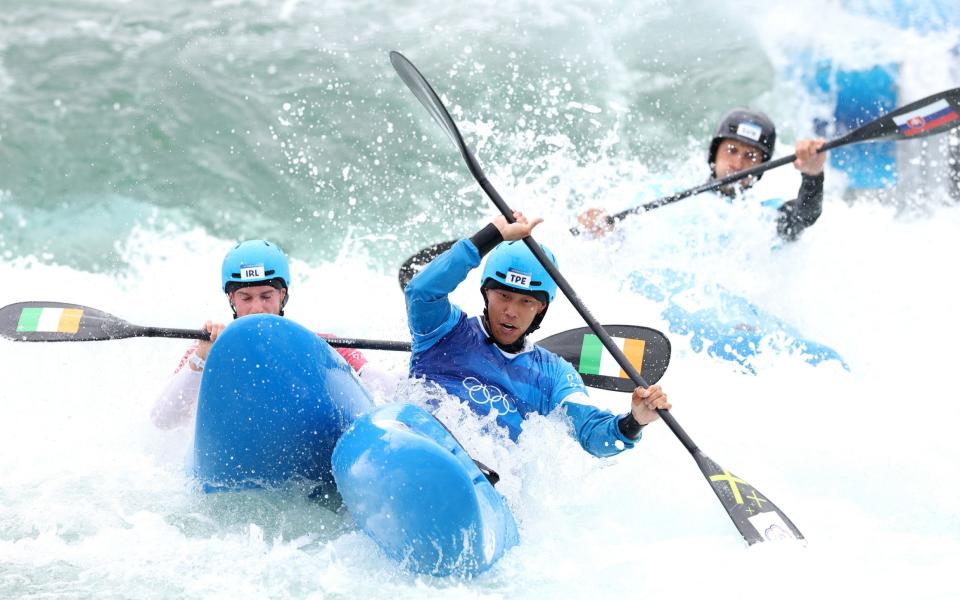

Splash, bang, wallop! The bangs and wallops are as inevitable as all the splashing in an event where chaos reigns and kayakers are prone to lose a tooth or two.
When the IOC added kayak cross – formerly known as extreme kayaking – to the schedule for its Olympic Games debut it knew it was on to a winner. They race down the course together and battle not against the stopwatch, as in the traditional form of the slalom sport, but against each other. For once the clock is more forgiving.
Four boats go at it each time and there is nothing resembling a lane, just a collection of downstream and upstream gates at which they paddle and scrummage for dominance. From the moment the competitors are launching from a ramp, more than five metres above the water, they are bumping in the style of aqua dodgems. It does not end.


From being asked to be Tarzan, plunging nose first into the rapids – “from which,” as Edgar Burroughs’ book says, “no man has ever returned” – they soon have to turn into the bravest Inuit as they must go completely underwater and execute a 360-degree Eskimo Roll under a “limbo” rod. Once the right way up, they continue their H20 helter-skelter, hurtling for the first finishing line.
Jeopardy is everywhere. Although the organisers do not go full Gladiators and fire balls from cannons at the protagonists, it very much has that feel.
The fans, who packed out the horseshoe grandstands on the first two days of heats, and will again for Monday’s finals, love it with a bloodlust that does not begin to pretend they are at the Vaires-sur-Marne Nautical Stadium simply because of their passion for pure sport. They are encouraged to scream and shriek by pumping music, and a live drummer, and the obligatory Australian tannoy announcer who sounds as if he goes into a frenzy whenever his eggs are done properly. Anything goes, maaaate.
The new event of Kayak Cross (within Canoe Slalom) has made its highly-anticipated Olympic debut! In Kayak Cross, paddlers compete simultaneously against each other after dropping from above to start the race. (1/2) pic.twitter.com/ct1oW82VTW
— Mayor David Holt (@davidfholt) August 3, 2024
Except it might surprise casual observers to discover there is a rule book that contains actual rules. Yes, they are allowed to ram each other – in truth, that is unavoidable on the narrow course – but the boats are standard and the paddles cannot be metal tipped. Dangerous contact with another’s head or body that may result in a personal injury is not permitted.
If intentional that is. It is not only the wackiest sight in Paris, but perhaps the whackiest, too, with the kayaks and paddles reeling around and smashing fellow competitors in the face. “We don’t have any big problems, but we sometimes see split cheekbones,” says Titouan Castryck. “And if we take a competitor’s boat in the head, then that’s broken teeth”.
Castryck, like the overwhelming majority, wears a mouthguard, as well as the compulsory helmet. “If you get a boat in the gob then you are a bit concerned when you take off your gumshield about what you might find in there.”


The French 19-year-old is one of Joe Clarke’s main rivals for gold. The Englishman sometimes chooses to dispense of the mouthguard, but that is because his game plan is not to see man or craft throughout the minute-long spectacle. “My super-strength is to get a good entry from the ramp and then go hell-for-leather to get myself clear over the first stretch,” he said.
So far, so, so good. In his two heats to the quarters, Clarke, the 2016 winner of the canoe slalom, has enjoyed clear water. He is acutely aware of the risks, however.
Mallory Franklin, his countrywoman who also has a huge shout, explained how he received a nasty cut earlier in the campaign.
Naturally, there is the chance that it could get ugly, although Clarke insists “we have a huge respect for each other as we all know each other so well from competing in the slalom.” Nevertheless, now there is something weighty on the line, Clarke recognises the potential. “I suppose someone could get desperate out there if they are trying to win a medal, but I never would,” he said.
“You have to be competitive, but can’t get too aggressive as you’ll make mistakes. And that is the beauty of cross. You can go from first to fourth in a moment or vice versa.”


It is similar to speedway in that regard, although the IOC – in its obsession to be down with the kids – cravea for it to be the water equivalent of BMX, or skateboarding, or snowboard cross. And, whisper it, but if heroes and villains do emerge, then it could be all of those and more.
As thrilling as it is to watch first-hand, it was made for TV and for sitting in the armchair and cheering and wincing and pulling the cushion to your eyes as you giggle yourself silly.


Source Agencies



